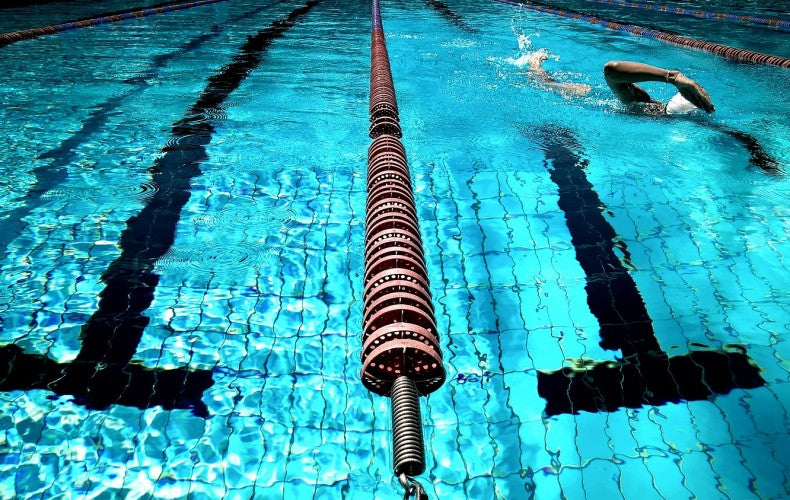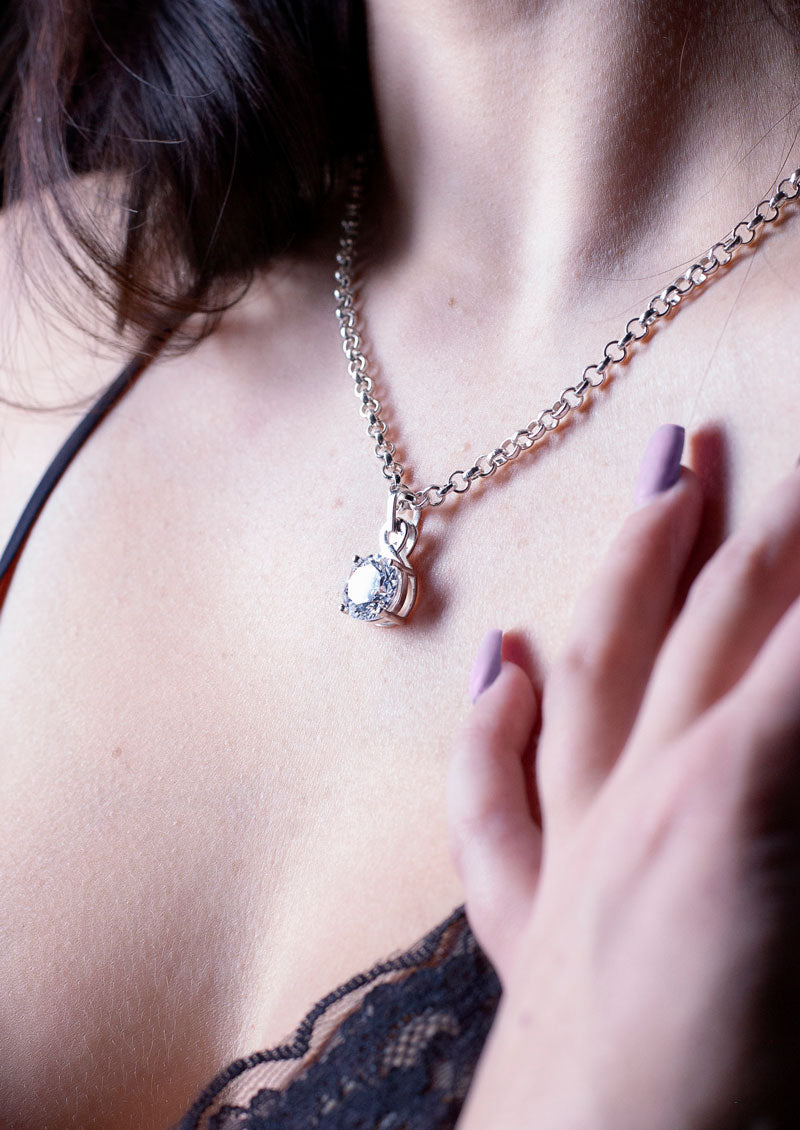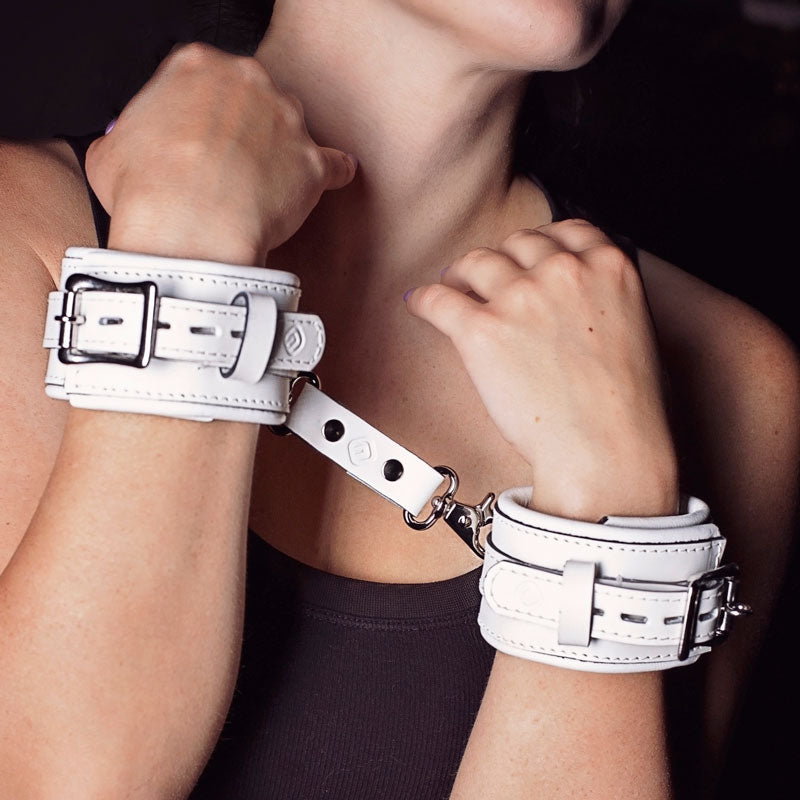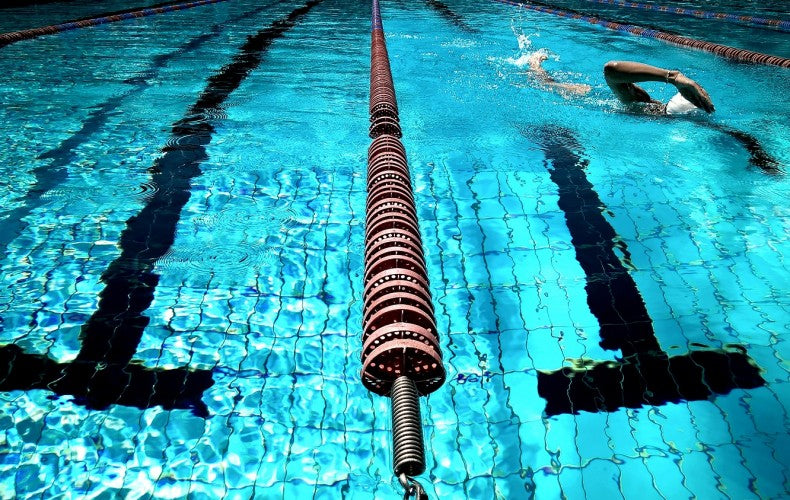In the D/s lifestyle, it’s common for people to wear a collar or cuff that locks. As a symbol of devotion and ownership, it’s worn 24x7 and nearly never removed.
However, this can present challenges for normal everyday wear if you have an active life and like to swim, run, dance, mountain climb, or generally go on adventures. Would a collar interfere with that activity?
The answer is yes and no.
While any old collar might get in the way, the right collar, properly maintained and cared for, with the right fit, should not interfere with any activity, no matter how bustling or mobile.
Here are some ways to preserve both your comfort and your vigor while collared.
Most importantly, listen and pay attention to your own body while collared.
When doing a strenuous activity, check in with yourself often. Are you sore, feeling weighted down, chafed? Pay attention to your body and what it’s telling you. There’s a possibility that your collar could be too heavy, the wrong fit, or just the wrong material for your choice of specific activity or sport.
Collar fit and comfort
Breathing is, of course, a concern when wearing a collar 24x7, especially if you wear a tighter fitting collar. Most importantly, you want to ensure there enough room between the collar and your neck, making it easy to breathe.
If you wear a loose-fitting collar, you will not likely have anything to worry about, but if you are concerned take some large exaggerated breaths and neck movements to ensure you feel comfortable. It is better to find out your collar is a little tight in the safety of your home and not when you realize you’re having trouble breathing and need to take it off very quickly.
Skin Irritation and Bruising
Skin irritation can be a common occurrence for some collars depending on the metal, the finish, your skin, and if you are using sunscreen or skin care products. Even the smoothest, softest materials can cause chafing when sweat and movement is involved.
Bruises can, and do, sometimes happen, especially with heavier rigid collars or cuffs that lay on a collar, ankle or wrist bone.
Using a buffer like a piece of cloth or padding is a great temporary way to protect the skin from heavy or scratchy collars, and a good way to wipe away sweat as it accumulates.
With strenuous activity, caring for the material of the collar itself is very important for the longevity of the jewelry.
Even 24x7 collars with a lifetime warranty need occasional love and care to maintain their shine.
Check with the seller or manufacturer on the best way to polish or clean the material. Examine the collar often to look for any signs of wear, scratches, or rust.
Different activities call for different considerations.
Here are some of the most common activities we get questions about, and how to make sure you’re safe and comfortable while collared.
Swimming is easily the most frequently asked question on the list, because it’s the hardest on most jewelry. Whether it’s the salt of the ocean, the chemicals of most pools, or even the minerals in normal bath water, collars and their wearers should be cared for faithfully.
First, choose a collar that’s tolerant to water exposure. Obviously leather or cloth will not hold up long. A lighter rigid metal collar or a light chain would be the both the strongest in the water, and the least chafing material. A locking collar will ensure that the collar won’t open and be lost underwater. If there is a padlock on your collar, make sure that the insides are meant to get wet as well. Even the waterproof ones need a simple blowing out to dry out the locking components within.
Salt, chlorine, sweat, and sunscreen might make the collar lose its shine, but an occasional polish with a mild cleaner or vinegar will bring the polish right back. It is also a good idea to rinse off the collar with fresh, clean water immediately after getting out, and then dry it thoroughly.
Running is an activity that is only a little harder on the wearer of the collar than the collar itself.
Make sure to pick a collar that’s sturdy enough to withstand bouncing and tugging from running without bending or breaking.
A collar that bounces off the chest and repeatedly hits the collar bones can be extremely painful for the wearer after a few minutes. It’s more comfortable for most people if the collar is tight enough on the neck that it doesn’t bounce much, but obviously still loose enough to breathe freely.
A light, sturdy chain collar will be the best bet on comfort for running, especially if worn with a small amount of cloth or padding underneath the collar and against the skin. A leather collar would be tight enough to be comfortable as well, though might cause chafing and discomfort from sweating.
Wrestling, boxing, and martial arts are fairly dangerous sports to be collared 24x7, but not impossible with the right considerations. If possible, tell the trainer or instructor so they know about the collar. They may recommend against wearing during a match, especially in sports where any jewelry is banned for safety. Be sure to always have the key, screw, or combination nearby in case of emergency.
Pick a tighter, strong chain necklace that makes it easy to breathe and have full range of motion, but close enough to the skin that an opponent will not be able to grab at it and choke you.
In general, we strongly advise against wearing a collar during these activities.
Other popular Sports. Basketball and football, or any sport where a player is in close proximity of their teammates or opponents, have the same problems arise from both running and martial arts. 1.) The collar can be caught and pulled at and 2.) the collar can bounce against the chest, causing skin irritation or bruising.
In these cases, a tighter rigid collar or chain would be the best choice but we advise against wearing a collar during these activities. A bracelet or anklet is generally less risky.
In sports like Baseball, where there is limited contact with opponents or teammates, the collar and the wearer are pretty safe. Bruising and skin irritation might happen from running, but overall just about type of collar can be worn.
For climbing, lifting, gymnastics, dance, etc., find a collar tight enough that you aren’t in danger of it getting in the way of the activity or of it catching on something and choking you.
If there’s a chance you’ll be upside down, like in gymnastics, it is likely the collar will slide up and hit you in the face, so it is generally not recommended. However, an anklet and perhaps a bracelet should be fine. As always, if you are going to wear anything, make sure you have plenty of room to twist, move, and breath well before taking part in the activity or sport.
General Safety Considerations
It’s very important with a locking collar, the wearer has the ability to have the collar opened in an emergency. If someone else has the key, screw, or combination that opens the collar, they need to be near enough to open the collar or provide a spare so the wearer can open it (at least when doing activities). All emergency rooms have tools to open or cut through a collar if need be, but we never want it to get that serious.
No collar should ever get in the way of you enjoying life, so sometimes that means trying out a few different types of collar to see which on best works for you.
Eternity Collars have a lifetime warranty, and we want you to be completely comfortable and satisfied for that entire time. That’s why we offer free exchanges and returns for items that need a different fit or feel to them. For any questions on finding the right collar for you, contact Eternity at customerservice@eternitycollars.com or 888-291-2630.
However, this can present challenges for normal everyday wear if you have an active life and like to swim, run, dance, mountain climb, or generally go on adventures. Would a collar interfere with that activity?
The answer is yes and no.
While any old collar might get in the way, the right collar, properly maintained and cared for, with the right fit, should not interfere with any activity, no matter how bustling or mobile.
Here are some ways to preserve both your comfort and your vigor while collared.
Most importantly, listen and pay attention to your own body while collared.
When doing a strenuous activity, check in with yourself often. Are you sore, feeling weighted down, chafed? Pay attention to your body and what it’s telling you. There’s a possibility that your collar could be too heavy, the wrong fit, or just the wrong material for your choice of specific activity or sport.
Collar fit and comfort
Breathing is, of course, a concern when wearing a collar 24x7, especially if you wear a tighter fitting collar. Most importantly, you want to ensure there enough room between the collar and your neck, making it easy to breathe.
If you wear a loose-fitting collar, you will not likely have anything to worry about, but if you are concerned take some large exaggerated breaths and neck movements to ensure you feel comfortable. It is better to find out your collar is a little tight in the safety of your home and not when you realize you’re having trouble breathing and need to take it off very quickly.
Skin Irritation and Bruising
Skin irritation can be a common occurrence for some collars depending on the metal, the finish, your skin, and if you are using sunscreen or skin care products. Even the smoothest, softest materials can cause chafing when sweat and movement is involved.
Bruises can, and do, sometimes happen, especially with heavier rigid collars or cuffs that lay on a collar, ankle or wrist bone.
Using a buffer like a piece of cloth or padding is a great temporary way to protect the skin from heavy or scratchy collars, and a good way to wipe away sweat as it accumulates.
With strenuous activity, caring for the material of the collar itself is very important for the longevity of the jewelry.
Even 24x7 collars with a lifetime warranty need occasional love and care to maintain their shine.
Check with the seller or manufacturer on the best way to polish or clean the material. Examine the collar often to look for any signs of wear, scratches, or rust.
Different activities call for different considerations.
Here are some of the most common activities we get questions about, and how to make sure you’re safe and comfortable while collared.
Swimming is easily the most frequently asked question on the list, because it’s the hardest on most jewelry. Whether it’s the salt of the ocean, the chemicals of most pools, or even the minerals in normal bath water, collars and their wearers should be cared for faithfully.
First, choose a collar that’s tolerant to water exposure. Obviously leather or cloth will not hold up long. A lighter rigid metal collar or a light chain would be the both the strongest in the water, and the least chafing material. A locking collar will ensure that the collar won’t open and be lost underwater. If there is a padlock on your collar, make sure that the insides are meant to get wet as well. Even the waterproof ones need a simple blowing out to dry out the locking components within.
Salt, chlorine, sweat, and sunscreen might make the collar lose its shine, but an occasional polish with a mild cleaner or vinegar will bring the polish right back. It is also a good idea to rinse off the collar with fresh, clean water immediately after getting out, and then dry it thoroughly.
Running is an activity that is only a little harder on the wearer of the collar than the collar itself.
Make sure to pick a collar that’s sturdy enough to withstand bouncing and tugging from running without bending or breaking.
A collar that bounces off the chest and repeatedly hits the collar bones can be extremely painful for the wearer after a few minutes. It’s more comfortable for most people if the collar is tight enough on the neck that it doesn’t bounce much, but obviously still loose enough to breathe freely.
A light, sturdy chain collar will be the best bet on comfort for running, especially if worn with a small amount of cloth or padding underneath the collar and against the skin. A leather collar would be tight enough to be comfortable as well, though might cause chafing and discomfort from sweating.
Wrestling, boxing, and martial arts are fairly dangerous sports to be collared 24x7, but not impossible with the right considerations. If possible, tell the trainer or instructor so they know about the collar. They may recommend against wearing during a match, especially in sports where any jewelry is banned for safety. Be sure to always have the key, screw, or combination nearby in case of emergency.
Pick a tighter, strong chain necklace that makes it easy to breathe and have full range of motion, but close enough to the skin that an opponent will not be able to grab at it and choke you.
In general, we strongly advise against wearing a collar during these activities.
Other popular Sports. Basketball and football, or any sport where a player is in close proximity of their teammates or opponents, have the same problems arise from both running and martial arts. 1.) The collar can be caught and pulled at and 2.) the collar can bounce against the chest, causing skin irritation or bruising.
In these cases, a tighter rigid collar or chain would be the best choice but we advise against wearing a collar during these activities. A bracelet or anklet is generally less risky.
In sports like Baseball, where there is limited contact with opponents or teammates, the collar and the wearer are pretty safe. Bruising and skin irritation might happen from running, but overall just about type of collar can be worn.
For climbing, lifting, gymnastics, dance, etc., find a collar tight enough that you aren’t in danger of it getting in the way of the activity or of it catching on something and choking you.
If there’s a chance you’ll be upside down, like in gymnastics, it is likely the collar will slide up and hit you in the face, so it is generally not recommended. However, an anklet and perhaps a bracelet should be fine. As always, if you are going to wear anything, make sure you have plenty of room to twist, move, and breath well before taking part in the activity or sport.
General Safety Considerations
It’s very important with a locking collar, the wearer has the ability to have the collar opened in an emergency. If someone else has the key, screw, or combination that opens the collar, they need to be near enough to open the collar or provide a spare so the wearer can open it (at least when doing activities). All emergency rooms have tools to open or cut through a collar if need be, but we never want it to get that serious.
No collar should ever get in the way of you enjoying life, so sometimes that means trying out a few different types of collar to see which on best works for you.
Eternity Collars have a lifetime warranty, and we want you to be completely comfortable and satisfied for that entire time. That’s why we offer free exchanges and returns for items that need a different fit or feel to them. For any questions on finding the right collar for you, contact Eternity at customerservice@eternitycollars.com or 888-291-2630.







